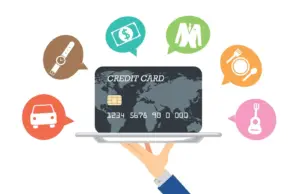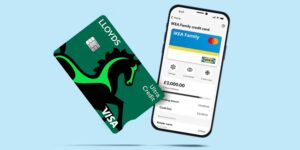Navigating the world of personal finance can feel overwhelming, but understanding two key concepts—managing debt and improving your credit score—is fundamental to building a strong financial future. This guide will provide a detailed, actionable roadmap to help you take control of your finances, reduce your debt, and boost your creditworthiness.
The Relationship Between Debt and Your Credit Score
Your credit score is a three-digit number that lenders use to assess your financial reliability. It’s not just a number; it’s a reflection of your borrowing history and your ability to manage financial obligations. A higher score typically means lower interest rates on loans, better approval odds for mortgages, and even more favorable terms on insurance and rental applications.
Debt, on the other hand, is what you owe. Not all debt is created equal. Good debt, such as a mortgage or a student loan, can be an investment in your future. Bad debt, like high-interest credit card balances, can be a major financial drain. The way you handle both types of debt directly impacts your credit score. Missed payments, high credit utilization, and excessive borrowing can all cause your score to plummet.
Understanding this dynamic is the first step toward financial empowerment.
Part I: Strategic Debt Management
The goal of debt management isn’t just to pay off what you owe; it’s to do so in a way that minimizes stress and maximizes your financial health.
1. The Debt-to-Income (DTI) Ratio
Before you can tackle your debt, you need to know where you stand. Your Debt-to-Income (DTI) ratio is a key metric that lenders use. It’s calculated by dividing your total monthly debt payments by your gross monthly income. For example, if your monthly debt payments (credit cards, car loans, etc.) are $1,000 and your gross monthly income is $4,000, your DTI is 25%. A lower DTI is better, as it shows you have enough income to comfortably manage your debt. Aim for a DTI below 36%.
2. Create a Detailed Debt Inventory
You can’t defeat what you can’t see. List all of your debts, including:
- Creditor name
- Current balance
- Interest rate
- Minimum monthly payment
This inventory provides a clear picture of your financial obligations and helps you identify which debts to prioritize.
3. Choosing a Debt Payoff Strategy
Two popular methods can help you pay down debt systematically:
- The Debt Snowball Method: This approach, popularized by financial expert Dave Ramsey, involves paying off your smallest debt first while making minimum payments on the others. Once the smallest debt is paid, you take the money you were paying on it and apply it to the next smallest debt. This method provides quick wins, building momentum and motivation.
- The Debt Avalanche Method: This strategy focuses on paying off debts with the highest interest rates first. By tackling high-interest debt, you save money over the long term, as you’ll pay less in interest charges. This is the most mathematically efficient method.
Choose the method that best aligns with your personality. If you need psychological wins to stay motivated, the snowball method is a great choice. If you’re disciplined and want to save the most money, the avalanche method is for you.
4. Consolidate Your Debt
If you have multiple high-interest debts, such as several credit cards, debt consolidation might be a good option. This involves taking out a new loan to pay off all your existing debts. The new loan typically has a lower interest rate and a single, predictable monthly payment, making it easier to manage and reducing the total amount of interest you’ll pay over time. Options include personal loans or a balance transfer credit card.
Part II: Building and Improving Your Credit Score
Your credit score isn’t a static number; it’s something you actively build and maintain. Here are the key factors that influence your score and how you can improve them.
1. Understand the 5 Key Factors of Your Credit Score
Your FICO® Score, the most widely used credit score model, is based on these five components:
- Payment History (35%): This is the most important factor. Paying your bills on time, every time, is non-negotiable for a good credit score. A single late payment can significantly damage your score.
- Amounts Owed / Credit Utilization (30%): This is the ratio of your credit card balances to your total credit limits. For example, if you have a total credit limit of $10,000 and a balance of $3,000, your credit utilization is 30%. Experts recommend keeping this ratio below 30%, and ideally below 10%, for the best results.
- Length of Credit History (15%): The longer your credit accounts have been open and in good standing, the better. This demonstrates a long history of responsible borrowing.
- Credit Mix (10%): Lenders like to see that you can responsibly manage different types of credit, such as credit cards, installment loans (e.g., car loans), and a mortgage.
- New Credit (10%): Opening multiple new credit accounts in a short period can be a red flag for lenders. Each time you apply for new credit, a “hard inquiry” is made, which can temporarily lower your score. Only apply for new credit when you truly need it.
2. Actionable Steps to Boost Your Score
- Pay Your Bills On Time: Set up automatic payments or calendar reminders to ensure you never miss a due date. This single action has the biggest impact on your score.
- Reduce Your Credit Utilization: Focus on paying down your credit card balances. If you have the funds, making multiple small payments throughout the month can help keep your utilization low.
- Keep Old Accounts Open: Don’t close old credit card accounts, even if you don’t use them. This preserves your length of credit history and helps keep your credit utilization low by maintaining your total available credit.
- Become an Authorized User: If a trusted family member with a good credit history adds you as an authorized user on one of their credit cards, their positive payment history can be added to your credit report. This is a great way for young adults to start building credit.
- Review Your Credit Report: Obtain a free copy of your credit report from one of the major bureaus (Equifax, Experian, or TransUnion) at least once a year. Check for any errors, such as incorrect late payments or accounts you don’t recognize. Dispute any inaccuracies immediately, as they can drag down your score.
Conclusion: A Path to Financial Freedom
Managing debt and improving your credit score are not separate tasks; they are two sides of the same coin. By strategically paying down your debt, you naturally improve your credit utilization and payment history, which are the most critical factors in determining your score.
Taking control of your finances requires discipline and a long-term perspective. Start with a detailed plan, choose a strategy that works for you, and consistently apply the principles of responsible borrowing. With a clear roadmap and persistent effort, you can reduce your financial stress, achieve your monetary goals, and build a solid foundation for a prosperous future.







